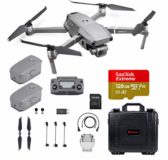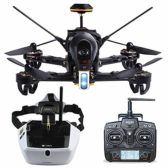The Best FPV Drones in 2021: What’s the Best Drone with an FPV Camera?

UVify Draco HD
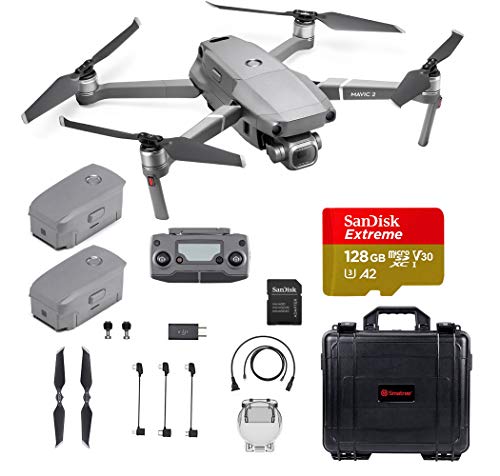
DJI Mavic 2 Pro
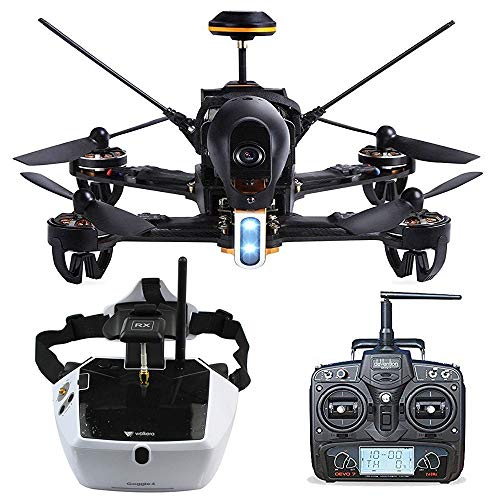
Walkera F210
If you ever dreamed of playing video games in real life, you’ll definitely love FPV flying!
Flying in FPV, or First Person View, is, in our opinion, the best and most immersive way to fly a drone. It’s like being transported inside the drone itself and driving it from the inside. You lose all sense of your surroundings – it’s just you and your flying machine.
Wait, we’re getting ahead of ourselves! Today is all about discussing FPV mode. We’ll cover a brief overview and then tell you our picks for the best drones with FPV functionality.
What is FPV?
First Person View (FPV) is a way to fly a drone that involves you seeing what the drone “sees” through its front camera. This is in contrast to Line of Sight (LOS) flying, which simply means controlling your drone while viewing it from afar (or flying it in “third person”)
FPV works through a system that involves the drone’s onboard camera and transmission. A real-time live feed is sent from the camera to either a screen on your smartphone or controller or to goggles. We’ve actually written about the best FPV goggles already on Dronesvilla.
An FPV monitor is cheaper and much more flexible, and most of the time you can simply use your smart phone as the FPV screen whilst attaching it to your controller, but nothing beats doing it with VR goggles.
Flying in FPV mode is like being in the drone itself. No longer do you feel like a separate person driving it from the outside. It’s like being in the drone’s cockpit and directing its every move. It’s an almost spiritual experience that must be tried to be believed! This is also an essential feature if you’re looking for a racing drone.
FPV with VR is what we like to call “playing video games in real life!”
But you don’t need the goggles to make great use of FPV. Let’s dive in to our top selections now.
The Best FPV Drones
We may receive compensation on qualifying purchases via our links. This does not change how we review items. For more information, please read our affiliate disclosure.
The modular build of the Draco HD is designed for speed, performance and reliability.

- Flight Time: ~8 minutes
- Top Speed: 50 mph
- Charge Time: ~60 minutes
- Range: 300m / 960ft
- Remote Controller: WiFi 5.8GHz @ 40 channels (included in the set)
- Camera: 90°Adjustable 720p
- Live Video Transmission Range: 150m / 480ft
- Weight: 485g / 17.10oz (without battery, battery weight: 207g/0.46lbs)
- Working Temperature: -5°C to ~ 40°C
- Rated for indoor and outdoor use
The Uvify Draco is a multi-purpose, high-speed drone that’s primarily used as a racer. But it goes beyond that and can be used as a freestyle or even photography drone.
One of the advantages of the Draco is that it’s ready to fly right out of the box. This is great for those who just want to focus on racing with an RTF drone, and in this regard, the Draco delivers admirably with a swift and agile drone.
The drawback is that the Draco isn’t as easy to modify. The drone compensates for this by making the parts modular, like the propellers and some internal components. But it still limits you to Uvify parts and accessories.
Fortunately, the components right out of the box are superb. The Draco’s camera allows FPV video transmissions at 720p HD resolution, which is more than enough for a racing drone. The camera can also be adjusted by up to 90 degrees.
However, there’s no way for you to use FPV right out of the box. You need to purchase separate goggles for it, via a ProSight receiver, which you also need to get. This adds on to the already high cost of the Draco, which can discourage newbies from getting this drone.
Performance-wise, though, the Draco dominates. It has an aerodynamic frame and a powerful propulsion system, making it capable of reaching top speeds of up to 80 km/h.
The drone has a flight time of around 8 minutes, which is already impressive given that the HD FPV is a significant drain on the batteries. It uses smart battery technology, however, to maximize its capacity, with a built-in computer that monitors things like voltage and battery life.
Overall, the Draco is a high-end racing drone with enough features to keep it competitive. It’s recommended for those who want a racing drone right out of the box, but it might not be for those who are into modifying their own racing drones.
+ Pros
- Cons
One half of the Mavic 2 series, the Pro model offers FPV — and one of the best cameras that money can buy in a drone.

- Flight Time: 30 minutes
- Range: 7 kilometers
- Camera: 4K resolution at 30 fps; 20 MP stills
- Weight: 1.64 pounds
- Gimbal: 3 Axis
For non-racing applications, DJI’s Mavic 2 series is one of the best, if not the best, FPV drone you can possibly get your hands on. It’s all due to several reasons which we’ll delve into.
First, let’s talk about FPV mode. The Mavic 2 can stream live video feed at 1080p HD resolution. This is about the best that you can hope for, and it is enough to give you crystal clear FPV.
The Mavic 2’s video transmission system, OcuSync 2.0, also makes an impossible feat possible: transmitting high-resolution video at a distance of up to 8 km! This also happens to be the control range of the drone, so you get complete FPV support no matter how far out you fly.
Because of this, FPV performance is fantastic with the Mavic 2, with a 40 Mbps download speed and latencies as low as 120 ms. Combined, it provides smooth, real-time FPV footage.
The drone also supports both 2.4 and 5.8 GHz frequencies, and even automatically switches between them. This allows the Mavic 2 to operate exceptionally well even in high interference environments. In typical situations, it’s almost impossible for the signal to drop.
Supporting FPV mode is one of the most robust obstacle avoidance technologies ever put in a drone. The Mavic 2 has Omnidirectional Obstacle Sensing, which allows it to detect collisions from all directions. It’s one of the few drones in the market that gives a full 360 protection.
Aside from this, you also have safety mainstays like Return to Home, which can make your FPV flying even safer.
Performance wise, there’s really nothing to complain about the Mavic 2. It’s capable of flight times of around 31 minutes, one of the longest ever in a drone.
The Pro version has the superior photo and video quality with its Hasselblad 4K camera.
Overall, there’s a reason why the DJI Mavic 2 series is the best non-racing FPV drone you can get. It’s because of its features and specs that are hard to match.
+ Pros
This nippy little FPV drone has a night vision camera! Great for flying night or day.

- Flight Time: ~9 minutes
- Charge Time: ~120 minutes
- Range: 400m / 1312ft
- Remote Controller: WiFi 5.8GHz (included in the set)
- Camera: 700TVL night vision camera
- Live Video Transmission Range: 400m / 1312ft
- Weight: 375g / 13.22oz
- Working Temperature: ~-10°C to ~+40°C
- Rated for indoor and outdoor use
The Walkera F210 is a fast and agile racing drone that’s ready to fly right out of the box. It has a host of great features that make this one useful even beyond racing.
Let’s start with the FPV mode. The F210 features a 700 TVL video camera. This is capable of supporting HD video feed to your FPV monitor or goggle, which makes for some very clear footage. The 120-degree FOV is perfect for racing, giving you a broader view of your surroundings.
Another plus of the camera is that it uses low light technology. This allows you to use the F210’s FPV mode even in poorly lit areas. Even if you’re not racing it, this drone is great for flying around at night.
This F210 has 5.7G Goggle 4 FPV goggles included, so you can utilize FPV mode without any additional equipment or modding.
The 1300 mAh battery gives the F210 a flight time of around 8 – 9 minutes, when flown at moderate speeds with FPV turned on. Not too bad for a racing drone but pretty short for a hobby drone. Unfortunately, the battery can’t be swapped, which kills the momentum of using this drone.
But performance-wise, the F210 is a beast. This is an agile drone that’s capable of speeds of up to 80 km/h. Three flight modes are available, depending on the skill of the pilot. Stabilize is recommended for beginners, while intermediate is for doing stunts and rolls in the air. For expert racers who really want to unleash the full potential of the F210, however, should pick Advanced flight mode.
Controls are tight and responsive, thanks to the F3 Flight Controller and the DEVO 7 remote controller, with its intuitive joysticks. You can opt for the DEVO 10 for a color display, but we like the simplicity the DEVO 7 gives.
Overall, the Walkera F210 is an impressive little racer with an equally fantastic FPV mode, with video streaming that’s suitable for any situation.
+ Pros
- Cons
The Mavic Air 2 is a groundbreaking development in the mid-budget range. Almost no other drone compares for the price.
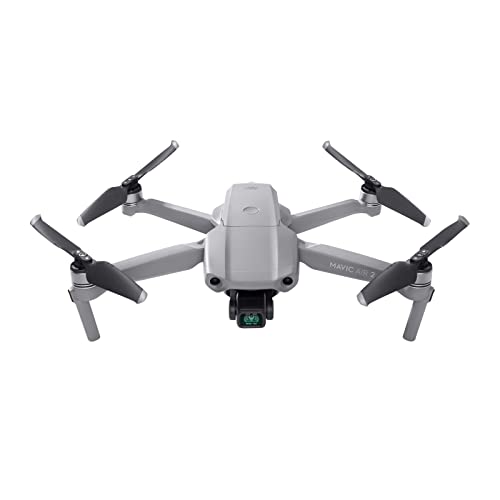
- Flight Time: 34 minutes
- Weight: 1.3lbs / 0.59kg
- Camera: 48MP with 4K/60FPS video
- Range: 10km / 6.2 miles
The DJI Mavic Air 2‘s quality isn’t much of a surprise to anyone that knows the drone space — we’ve been blown away with what this machine is capable of considering it falls way below the $1,000 price tag that is usually required for such a premium product.
Its 34 minutes of flight time is staggering given its size and price, making it one of the biggest battery life drones you’ll find.
The Mavic Air 2 has obstacle detection in three different directions and intelligent tracking, along with DJI’s ActiveTrack technology, to also make this one of the best bang-for-the-buck follow me drones that there are.
With a 48MP 1/2-inch CMOS sensor camera and 4K video supported by a 3-axis gimbal, this is a brilliant option for anyone looking to take premium quality photos and videos without having to spend an arm and a leg.
+ Pros
- Cons
Known for its fantastic quality to price ratio, Potensic is an emerging brand in the drone scene.
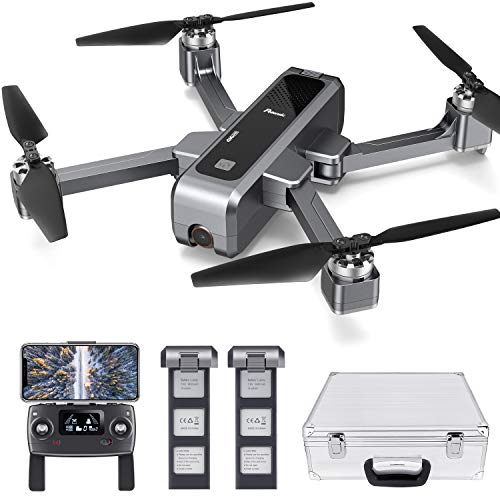
- Follow Me Method: GPS
- Flight Time: 20 minutes
- Camera: 2K resolution camera
- Weight: 5.25 pounds
The D88 is one of Potensic’s better models and has every feature you’d ever want in a drone.
The D88 is a foldable drone that makes it exceptionally compact and portable. It even has its own aluminum case, so carrying it around is extra easy. Which you’ll do quite often if only to fly in FPV mode.
FPV flying with the D88 is pleasant, to say the least. It’s equipped with a 2K camera, which streams in live video feed via a 5G WiFi transmitter. It allows you to fly in FPV mode up to 300 meters, which isn’t too shabby.
The 5G frequency allows for some high-speed video feeds. Everything was crisp with a clear definition, with no signs of lag at moderate (around 150 meters) distances. Everything is streamed directly to your 5G compatible smartphone.
When it comes to flight performance, the D88 is no pushover, either. Its four 1350 kV motors are capable of flying the drone at up to 50 km/h. This is powered by a 3,400 mAh smart battery, giving it the juice to last for up to 20 minutes with conservative use.
This is an overall easy and stable drone to fly. The combination of optical flow and ultrasonic sensors allow the D88 to hover itself effortlessly, maintaining its position. Controls are intuitive and responsive.
The D88 also has its own GPS and autonomous flight features, such as Return to Home. The Follow Me mode works like a virtual leash, allowing your drone to follow you around accurately.
Other modes worth using are Waypoint Mode and Points of Interest Mode. The former allows you to lay down points on the app’s map, creating a path your drone can follow. The latter sets an object around which the D88 circles around in orbit.
The Potensic D88 certainly is a drone that surprises. With its affordable price tag, it nevertheless has an excellent FPV mode and standout features that make it a winner. This is the perfect drone to go freestyling with.
+ Pros
- Cons
Next to the Mavic 2, the EVO drone by Autel Robotics is one of our favorite drones.
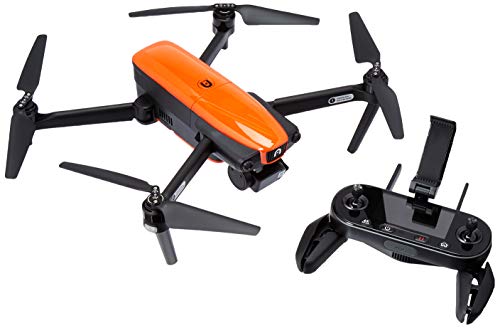
- Flight Time: ~30 minutes
- Charge Time: ~210 minutes
- Range: 7050m / 4.4 miles
- Remote Controller: WiFi 2.4GHz (included in the set)
- Camera: 3-axis gimbal 4K 60fps camera with 12MP
- Live Video Transmission Range: 7000m / 4.3 miles
- Weight: 863g / 1.9lbs
- Carry Capacity: N/A
- Working Temperature: 0°C ~ 40°C
- Rated for outdoor use
The simple fact is that the EVO by Autel is one of the few that can actually compete with the technical dominance of DJI.
The EVO is an advanced yet rugged drone that’s made for the outdoor. Strong winds will not deter this flyer, and it can even handle a light drizzle. Durability is definitely the good mark of an FPV drone.
For the FPV feature itself, the EVO delivers it through a powerful 4K camera that can transmit at a resolution of 1080p HD at 60 fps. Thanks to its 2.4 GHz antennas, it gives the EVO a whopping 7 km of flight and transmission range. Yup, that’s smooth and lag-free video feed at 7x more than your typical FPV drone.
The live FPV feed is transmitted either to your smartphone or to the OLED screen in the included controller. You can also use it with an FPV goggle (not included in the package) via the VR mode in the EVO.
Paired with the fantastic FPV mode and range of the EVO is the equally long battery life. The smart battery technology gives it a flight time of up to 30 minutes, even with all features and FPV turned on.
The EVO also has a pretty robust obstacle avoidance system that gives it ample protection on the front and back. While mostly used during autonomous flight, you can make use of it when flying backward during FPV mode. The drone also has bottom sensors, but those are primarily used for safely landing the EVO on the ground.
Overall, the Autel EVO is a fantastic FPV drone to use for long range missions like aerial photography and industrial inspections, thanks to the live streaming quality and extended flight time.
+ Pros
- Cons
No products found.
The HS100G offers great value for money for those looking for an entry level FPV drone.
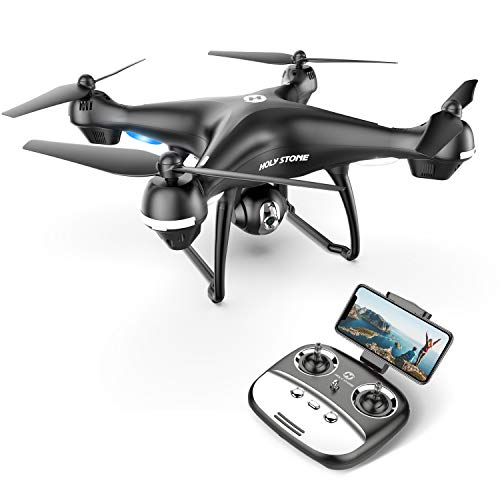
- Flight Time: 15 minutes
- Range: 500m
- FPV Range: 400m
- Weight: 700g
The Holy Stone HS100G is an excellent piece of tech for a beginner quadcopter. The FPV drone is equipped with lots of useful features that belie its sub-$200 price tag.
The HS100G features a 1080p HD camera, which captures above average photos with beautiful detail and color definition. The video produced is good enough for casual usage. But where the camera shines is in FPV mode.
The HS100G uses a 5G WiFi connection to transmit live video feed straight to your iOS or Android smartphone. You can mount this on the included remote controller as a makeshift FPV monitor. The 120-degree FOV gives you a broader view while in FPV mode, which makes for easier maneuvering.
The live feed has a range of 400m (a little shorter than its effective range of 500m), which is enough for most casual uses, or at least to get the hang of it. The 5G WiFi connection is pretty stable, and the FPV experience with this drone is generally smooth and lag-free.
In terms of flight performance, the HS100G has a lot of standout features, thanks to the GPS onboard. Altitude Hold allows the drone to hover on its own, giving you free rein to take pictures or fly it around. Return Home makes the drone automatically return to its origin point, while Follow Me makes the HS100G follow you around autonomously.
The HS100G also has a generous flight time of around 15 minutes, which is plenty of time to zip around with its FPV features.
Overall, the Holy Stone HS100G is an excellent beginner FPV drone to have. While not as compact, it handles pretty well, and the 5G camera allows for a smooth FPV experience.
+ Pros
- Cons
No products found.
The other half of the Mavic 2 series, the Zoom model offers a different camera — slightly worse in quality, but is more flexible.
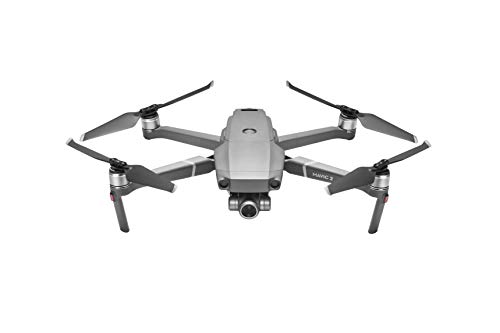
- Flight Time: 31 minutes
- Range: 8 kilometers
- Camera: 4K resolution at 30 fps; 48-MP super resolution stills
- Take-off Weight: 905g
- Gimbal: 3-Axis
Almost identical to the Mavic 2 Pro, The Mavic 2 Zoom has better flexibility in its camera because of its ability to achieve lossless zoom of up to 4x.
It still boasts the amazing 30+ minutes of flight time and an absolutely staggering range of control, meaning the Mavic 2 series of drones are arguably the best that hobbyists can buy in the market today.
+ Pros
Our top rated mini drone with huge performance in a tiny body. Perfect for…everyone!
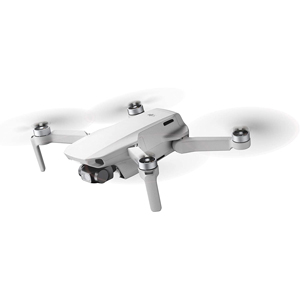
- This drone weighs less than 250g
- 12MP camera / 4K video, 4x digital zoom
- 3-axis motorized gimbal for image stability
- 10km range, max altitude of 4km
- Battery life: 31 minutes
DJI just can’t seem to stop releasing incredible drones.
The original Mavic Mini was our best ever value-for-money pick and now DJI have outdone themselves with the Mini 2.
We are blown away with the quality, performance and battery life that you can get with the DJI Mini 2 for a fairly affordable price. No, it’s not cheap, but its price falls far below most top products from competitors.
We’d say it’s now our favorite value-for-money pick by a long way, and it’s perfect for photography, videography, traveling, hobbyists and, well, everyone else too!
Better still, with its weight under 249g, it doesn’t even need to be registered with the FAA or CAA. That means you don’t need to be a registered drone pilot to fly this beauty.
+ Pros
- Cons
Buyer’s Guide: FPV Drones
Camera
The camera is the main component of an FPV system; after all, it’s the drone’s eyes that allow it to see and stream videos in real-time. However, when it comes to FPV, the highest resolution is not always the best choice. That’s because the better the camera quality, the more “data” needs to be transmitted, and this clogs up the system in terms of latency. The result is lag.
Resolutions of 720p HD is actually good enough. If you’re pushing it to 1080p HD, make sure your transmission system is robust enough to handle it without lagging.
Another consideration is the field of view (FOV). For most FPV applications, having a wider FOV is a good thing, because it allows you to see more of your environment. This is especially crucial in racing, where seeing a bit more of the obstacle round the bend is the difference between success and failure.
FOV comes down to preference, but we’re partial to wide 120 – 130 FOV camera lenses.
Range
The range of a drone determines not only the maximum distance at which you can control your drone but also how far your FPV feed can reach before lagging.
The effective range and FPV range are usually the same, but in some drones, the FPV range is much shorter. This is because FPV transmission is much more demanding since it involves bandwidth-heavy video data as opposed to simple commands.
The range is also a function of how powerful your drone’s transmission system is, and at what frequency it works. The most common is 2.4 GHz systems, which is also where WiFi operates. Some drones also operate in the 5 GHz space, which offers more significant bandwidth and, therefore, better image quality.
However, both are acceptable and reliable enough for FPV streaming.
Flight Time
Flight time is the one spec that’s at the top of most people’s list. Which is understandable, since it basically dictates how long you can play with your drone.
Flight time is a function of your drone’s battery capacity. The bigger this is, the more juice the drone has to power its flight and other functions.
This is much more important with FPV drones since continuously recording and streaming live footage adds an additional drain to the battery. For hover-only drones, we recommend a flight time of at least 15 minutes to maximize the experience fully. Racing drones, by nature, have shorter flight times since they rely on shorts bursts of power from the battery. In this case, around 10 minutes or so would be reasonable.
To further extend your flight time, getting a few spare batteries is vital. It’s also a good workaround if your drone’s battery capacity is unusually low (less than 10 minutes or so). Make sure they’re easily swappable to reduce the delays in between.
Obstacle Detection and Avoidance
While going in FPV mode will make you much more reactive to your drone’s surroundings, you still can’t see past your drone’s vision range. This includes the side and back of your drone, so you’re prone to hitting obstacles in those areas.
This is one advantage Line of Sight flying has over FPV. Because you can always see your drone’s surroundings from all directions, you’d know if it’s about to hit an obstacle.
These blind spots are especially true if you use FPV goggles. Being immersed in there means there’s no way of knowing if you’re about to hit an obstacle. This makes backward and sidewards flying difficult with FPV.
Unless your drone has an obstacle avoidance system. Using sensors, your drone can detect if it’s about to hit a wall or other object. You can then either avoid it or even have the drone automatically do it for you.
It’s best to go with a 360-degree obstacle avoidance system; however, not all drones have this feature. At most, they will have front and side sensors.
Safety and Landing Features
If you plan to do FPV mode, you need more straightforward ways to launch and land your drone. Landing them in FPV mode can be challenging for some people.
Luckily, it’s getting way easier nowadays to take off and land your drone. Most models will now have a One Touch Takeoff/Landing feature, which allows you to perform this sequence at the touch of a button. Easy!
You also need safety features while doing FPV, notably, Return to Home. This allows you to return the drone home at the push of a button. Some drones even do this automatically via GPS. This avoids you having to find a safe place to land, especially for long range missions.
GPS Features
Speaking of GPS, having one onboard your FPV drone is a big bonus. It gives you access to a slew of stability and autonomous flight features. For one, GPS allows your drone to stabilize itself and maintain its altitude and position.
Beyond this, GPS powers most of a drone’s autonomous flight modes. We already discussed one of the features, which is Return to Home.
One of the more useful auto flight modes to use is Waypoint Mode. This allows you to create a predetermined path on a GPS map, which your drone will follow automatically. This will enable you to fly in FPV without you having to control the drone manually. You’re just there to enjoy the ride.
You can also make use of Orbit Mode, which instructs the drone to automatically circle around a point of interest, such as a landmark or object, giving you a 360-degree view. This is great for roof inspections, so you can focus on analyzing instead of piloting.
FPV Goggles or Monitors
FPV mode can be viewed in two ways: using an FPV monitor or goggles. The FPV monitor can be any screen. In cheaper models, this is your smartphone or the LED screen on your controller. You can also invest in a dedicated monitor, often used by drone racers.
FPV monitors have the advantage of cost since you usually don’t need to invest in any additional gear for it. You can also easily switch from FPV mode to LOS flying by merely glancing at your drone while flying.
However, FPV monitors can suffer from glare, especially when out in the sun. It’s also not that immersive. For really getting into it, nothing beats FPV goggles.
Goggles are the closest thing you can get to actually being inside the drone itself, and is the best way to experience FPV fully. When it comes to goggles, you need to consider two things – quality and comfort.
There are two types of goggles: box or low profile. Box goggles usually feature a single screen, which is sometimes your smartphone. They’re the cheaper option, but they tend to be bulkier.
Low profile goggles, on the other hand, uses two screens, one for each eye. Magnification technology allows these screens to be placed closer to the eye, which significantly reduces the size of the goggles. This makes low profile the preferred type due to them being compact, but they’re also more expensive.
So our recommendation is to go with the low profile goggles if your budget allows it.
What Are the Uses of FPV?
FPV has a lot of different applications and is used in various drone subgroups, such as:
Racing
The most prevalent use of FPV is in racing. This involves flying a drone through a series of gates, fences, and other obstacles to be the first one to reach the finish line.
Since it’s a race, speed is involved. Racing in Line of Sight mode is simply not that accurate. To fly your drone that fast with the lightning-fast reflexes to avoid obstacles, you need to do FPV mode. Only then can you see what’s in front of your drone, and react fast enough to maneuver through a course successfully.
Trust us, drone racing is fulfilling but not easy by any means. Mastering flying in FPV mode is the first step to winning more races.
Fun
Some drone users simply FPV for the fun of it. Also called Freestyle FPV flying, this involves you merely flying through many different locations and unexpected areas.
The focus here is exploration, adventure, and acrobatics. You get to explore your local neighborhood or fly up from a vantage point you haven’t seen yet. You can even do aerial stunts and tricks! It’s a form of expression in flying form more than anything else
The free nature of Freestyle FPV flying is excellent for beginners to learn the ins and outs of this form of drone flying. You can practice for that big race or test the tweaks you did with the FPV system of your rig.
Photography
Photography is one of the most common uses of drones and FPV. Much like how doing FPV feels like you’re flying a drone, framing shots with FPV feels like you’re the one who’s actually holding the camera. It makes fine-tuning the framing of your photo that much easier and precise.
FPV also helps you create much better and natural looking aerial videos. You feel as if it was you who was holding the video camera, flying, and shooting through the air.
Long Range Flight
Some drones are capable of pushing the envelope of how far they can fly. Manufacturers are now churning UAVs capable of flying out for up to 8 kilometers. This is expected to go out further as technology improves soon.
The problem with long range flying, however, is that past a certain distance, you won’t be able to see your drone anymore to control it properly. This makes traditional LOS flying pretty useless.
FPV is the answer. It allows you to “tag along” with your drone on the journey, giving you a real-time feed of what your drone sees so you can steer it properly and away from danger.
Advantages of FPV
There are many advantages of getting yourself a drone with FPV rather than opting for one without it.
It creates a more immersive experience
The biggest reason to use FPV is it creates a much more immersive experience. You really feel that you’re inside the drone and flying it yourself. There’s nothing like it in the world, save for a full-blown VR experience.
Flying in the first person also gives you a much better appreciation for your drone that normal Line of Sight flying can’t.
It makes for more precise flying
Flying in FPV makes controlling the drone that much easier, for several reasons.
First, the first person view just feels natural. Compare having to, say, drive your car while you’re in it versus driving it from a distance, like you would an RC car. Driving the vehicle while on the inside is more natural because that’s what we’re used to all our lives with our own bodies.
Second, you get to see exactly what your drone sees in real-time. This makes you able to fly much more precisely and avoid obstacles before you hit on them. Flying with solely Line of Sight may not show you all the possible obstacles in the front of your drone, making it much harder to anticipate.
These two reasons combined give you much better reflexes while flying, allowing you to do split-second maneuvers that much faster. That’s why it’s the only way to do drone racing at the highest levels.
It makes long range flight possible
Doing a long range flight with your drone introduces a problem – you can’t really see your drone correctly at 1 km, let alone 5 km or more with some of the more advanced drones in the market. So if you can’t see your drone, then how are you supposed to maximize your drone’s range?
In these cases, you have no choice but to rely on FPV. It allows you to safely maneuver your drone even when you can’t see it. This is especially crucial in some industrial applications, which involve sending your drone to do inspections on hazardous areas.
It’s required for inspection jobs
Drones are continually being used to inspect areas humans can’t normally reach. These usually involve looking at things you often won’t be able to see from your vantage point.
Take roof inspections, for example. This is actually one of the more common uses of drones in the housing market. Without FPV, how are you supposed to inspect the roof itself from where you’re standing in the ground? Or how can an engineer check on a busted pipe that is on the other side of a cliff?
In both cases, FPV saves the day.
It gives you a brand new perspective into the world
Flying your drone in FPV gives you access to a world you never thought existed. Have you tried flying down that gap behind your house or over the house? Or did you take a bird’s eye view of the National Park you visited last week?
All of these make for some pretty interesting points of view that are typically impossible for a human to achieve.
It makes framing shots easier
Using FPV is an easier and more natural way to frame shots for photography. After all, it’s as if you were framing the shot yourself.
This matters very much when you’re doing wildlife or outdoor photography. You won’t always have the whole picture of what you’re trying to photograph, especially if the angles are impossible (too high up in the air, for instance).
FPV allows photographers to fine-tune their shots before taking them, in a way that is next to impossible with LOS flying.
It makes flying safer compared to LOS (Line of Sight)
Once you’re used to it, FPV flying is much safer than LOS. The reason is simple – you’re always seeing what you’re drone is seeing, so you can adequately maneuver it wherever it goes.
The problem with LOS flying is that, once you lose sight of it, you won’t be able to control it properly. This increases the risk of your drone crashing or, worse, getting lost permanently.
FPV mode is like having an eye on your drone at all times. Sure, you’re vulnerable to be hit on the sides, and the back since these are your blind spots, but these can be easily solved with obstacle avoidance systems.


